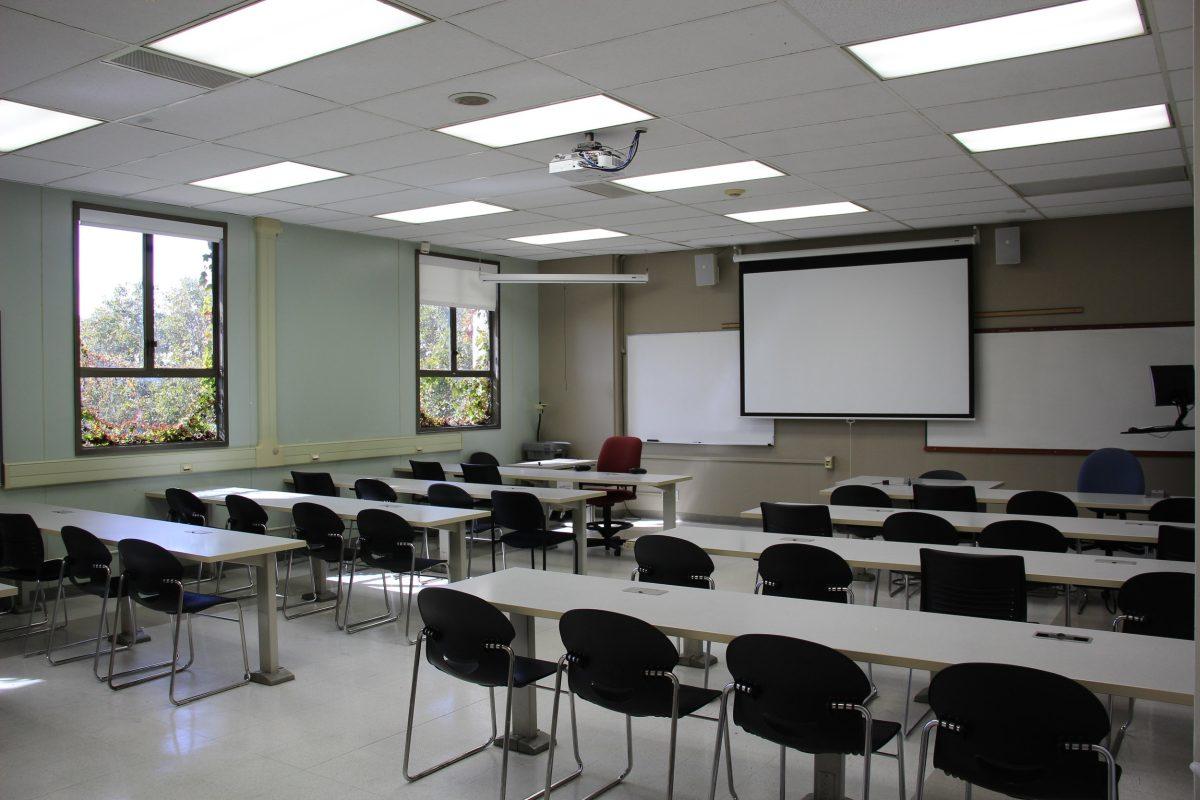Sonoma State’s classroom utilization rate is at a low of 53 percent, making it nearly impossible for the school to receive capital project funding, prompting concern at the university.
A good rate of classroom utilization would be anywhere from 70 to 80 percent.
Classroom utilization refers to the usage rate of classrooms during the day, 8 a.m. to 6 p.m.
The academic scheduling office is in charge of overseeing the building of the schedule of classes. They use a tool called 25live to schedule the rooms and time. The difficulty comes from the rule that departments can’t schedule more than 50 percent of their classes from 10 a.m.to 2 p.m, Monday through Thursday.
25Live was put into place in 2013, and there are no plans on purchasing a new one.
Elias Lopez, the Associate Vice President for Academic Resources, believes that classroom utilization is a problem that needs to be fixed at Sonoma State.
He believes that low classroom utilization hurts the students because, “Sometimes for students it is important to have as many courses during the day from 8am to 6pm.” If only 50 percent of classes from each department can be scheduled during the prime time, it can be hard for students to get into those classes.
The problem is certainly not an easy fix. Lopez explains why the university can’t just build more buildings. “Typical standards for classroom utilization during 8 a.m. to 2 p.m. would be 70 to 80 percent. For the legislature to consider funding another classroom building, they typically want to see utilization rates upwards of 70 percent.” With the classroom utilization rate as low as it is, the chances of receiving capital project funding are basically zero.
Lopez also believes that all universities have this problem at some point.
“Classroom utilization is reviewed by all universities from time to time. This is usually done in partnership with the Academic Senate.” he explained.
Mark Perri, the chair of the Academic Planning, Assessment, and Resources Committee, believes the problem should be fixed with a different scheduling program. “I feel that a less-complicated scheduling module in combination with inter-departmental cooperation and planning is the best solution. I feel that departments should communicate so that pre-reqs and co-reqs don’t conflict between departments.”
Also, Tech High leaving its space in Salazar Hall and the Stevenson Hall remodel will open up more classrooms in the future.
Perri also acknowledges that classroom utilization is an issue when scheduling classes for faculty. “We should try to schedule our classes more efficiently so that the number of sections that are run isn’t limited by scheduling. But, this will also require increased funding to mount the additional sections, or there’s no reason to be more efficient.
Perri cares about an increased student graduation rate. “I would like to move towards a system where no students are waitlisted and no students have to resort to winter or summer classes to graduate in four years.” Perri said.
Perri explained the issue is difficult for the faculty as well. “It is difficult because we request certain times for our classes, but then they turn out not to be available. Then we have to adjust the schedule, which is very difficult to do after everything has been set. So for example, I had to move a class this semester from 1 to 3 p.m. to 12 to 2 p.m. because there weren’t any available classrooms open at 1 to 3 p.m. This time makes it difficult for the students and faculty to eat lunch.”
The idea of having certain classrooms only for three unit or four unit classes to avoid times when the classroom is empty has also been floated at the Academic Senate.
Provost Lisa Vollendorf said there is a new software in place that may further help the students and faculty, called Platinum Analytics. This software “helps us predict student demand for GE and required classes in the major. This will help us better predict and plan for class demand across all disciplines at Sonoma State.” Vollendorf said.



































